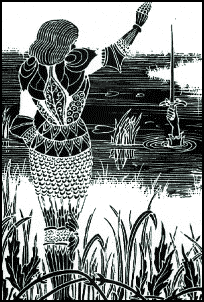|
Everyone who has approached the Arthurian
legends with a view to finding out more about them
is struck at once by their sheer breadth and
complexity. Many turn away at this point or content
themselves with reading Sir Thomas Malory's Le
Morte d'Arthur. In so doing they miss a great deal.
Wonderful though Malory's retelling of the legends
is, it is only one among many. To have failed to
discover the fourteenth-century poem of Sir Gawain
and the Green Knight, or the mysterious pageantry
of the mighty Vulgate Version from which Malory
himself drew extensively, is to have missed a
wonderous experience.
Even if the intrepid reader does find his way to
Wolfram von Eschenbach's Parzival and discovers
how it differs from Perlesvaus, he will almost
certainly reel back at the welter of names -- people,
places and things -- which are part of the magic of
the Arthurian world but which change, overlap and
sometimes contradict each other outright.
Toward the end of the twelfth century, the poet and
philosopher Alain de Lille wrote:
|
|
That "flying fame" has continued into the twentieth
century which has probably experienced the largest
explosion of interest in the matter of Arthur since
the Middle Ages. Novels such as Rosemary
Sutcliffe's Sword at Sunset, Henry Treece's The
Great Captains, and most recently, Marion Zimmer
Bradley's Mists of Avalon have helped keep the
legends alive; now those who have longed to
discover for themselves the older stories behind
these fictional re-tellings, can take the first steps
upon their own Arthurian quest.
|


